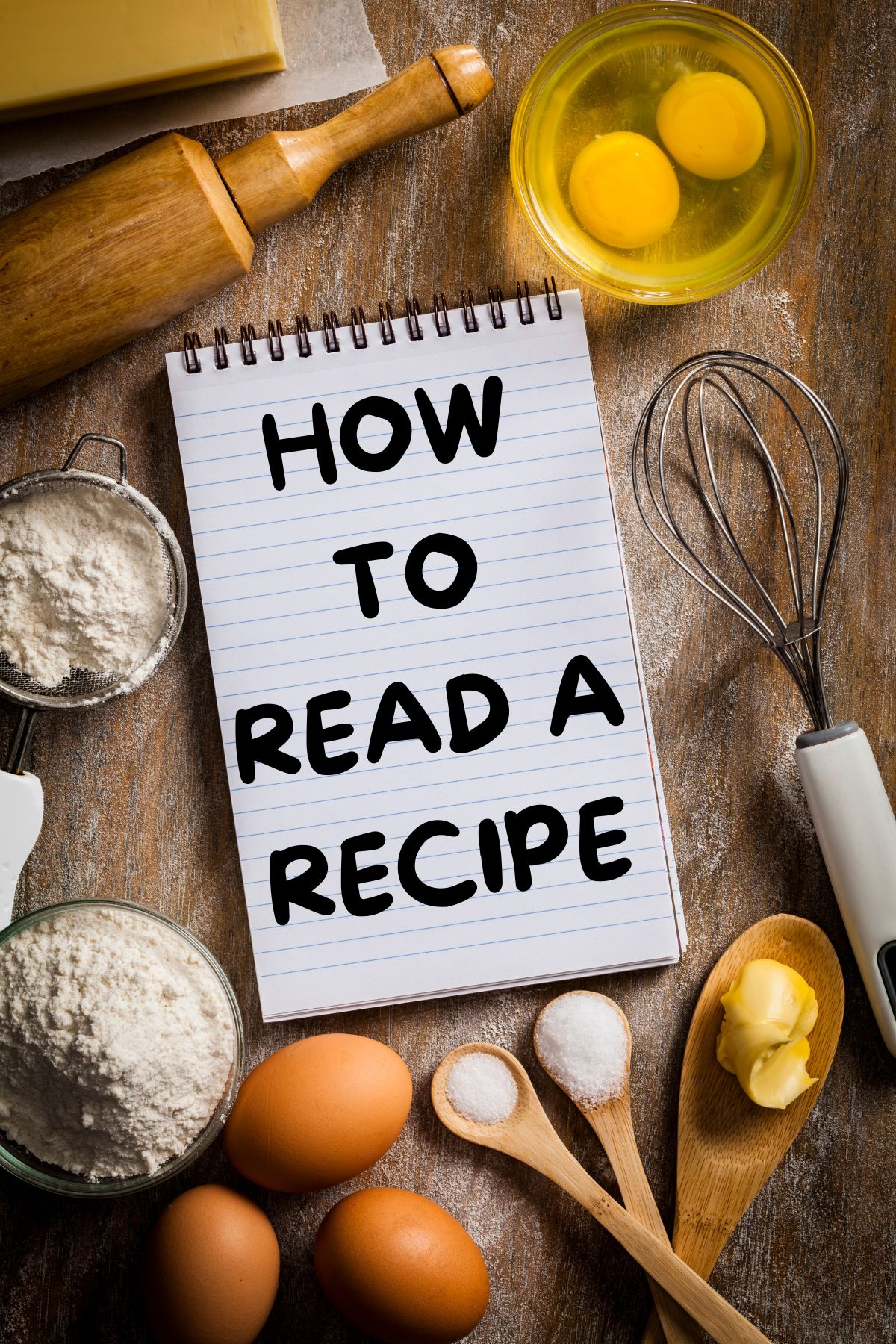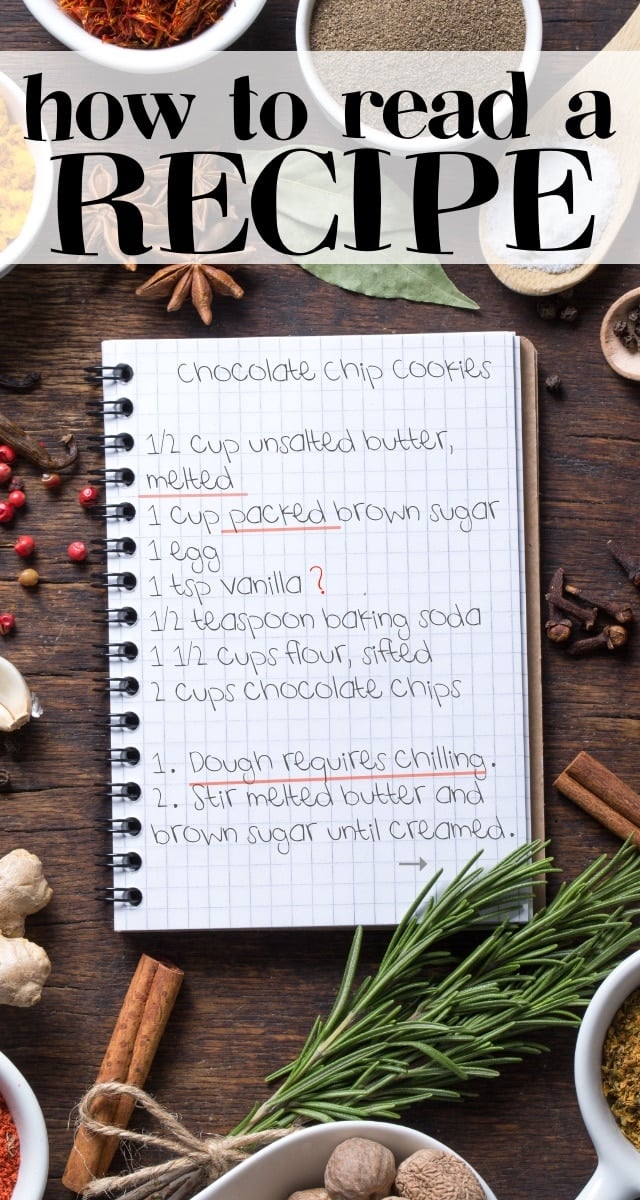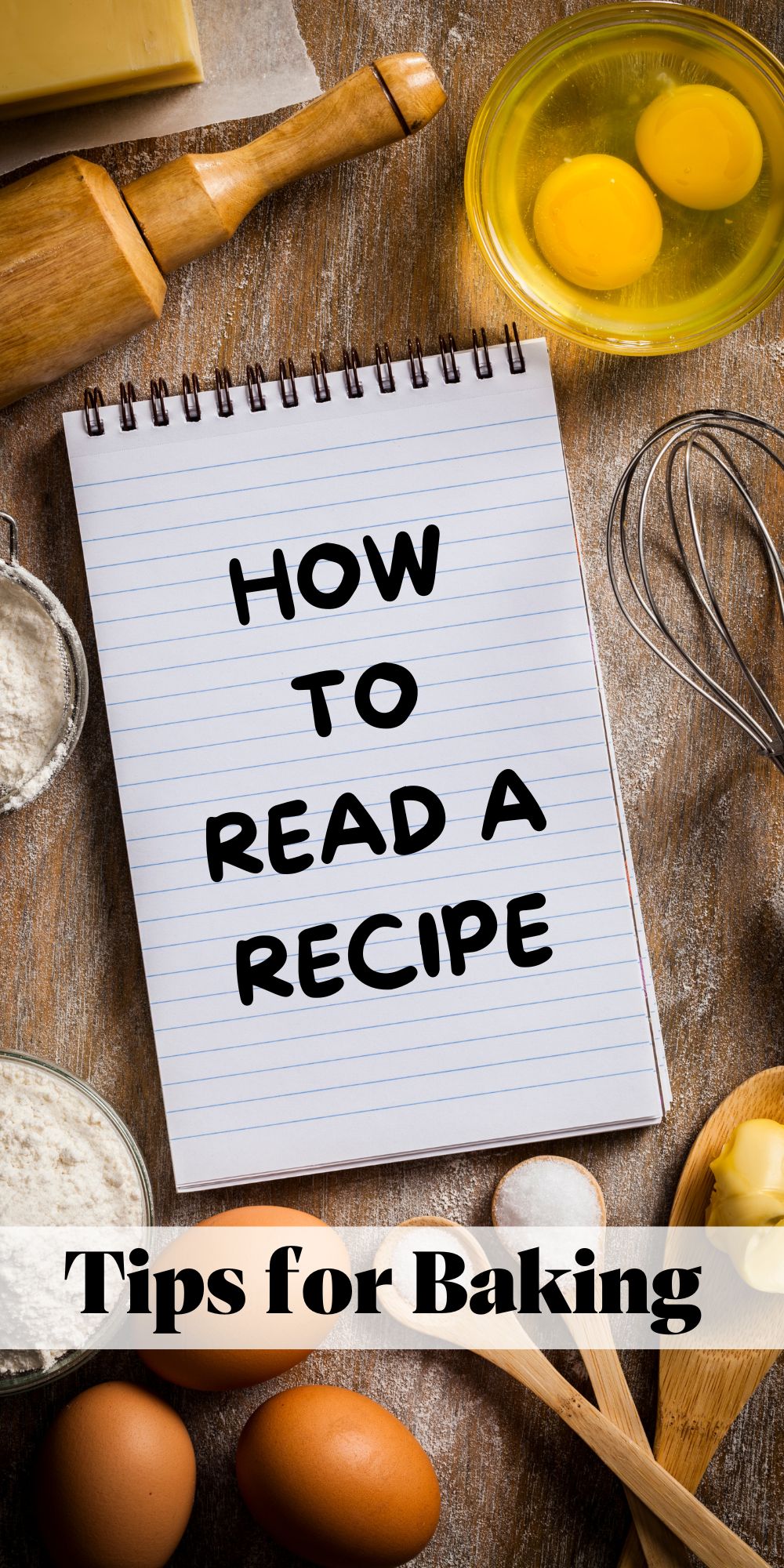This post may contain affiliate links. For more information, read my disclosure policy.
This is probably the most important tips post I’ll ever write: how to read a recipe. I know it sounds silly: just read it! But if you’re not nuanced in reading recipes it can be difficult. Little things here or there can cause problems in your results so it’s important to know the steps for reading a recipe so that you have success in the kitchen!

Table of Contents
1.Read the recipe first!
This may seem like a silly thing to add to the list but so often people skip this step (I know I do). It’s really important to read the entire recipe before starting. This way you’ll know how long it’s going to take, if something needs to be chilled or if you need to google something you don’t understand or if you need to soften your butter. It’s also good to do so you know if you have everything you need to make the full recipe, which leads us into the next tip.
2. Do you have everything?
We’ve all been there, which is why it’s important to read the recipe first. That way you know if you need to hit the store for onions or if you need cake flour instead of all-purpose. Maybe the recipe directions call for 8-inch pans and you only have 9-inch – that way you can take the time to google your questions before you start baking. (Or hit up amazon!)
Besides the fact that not having an ingredient is frustrating when you’re midway through a recipe, it can also be destructive. Substitutions don’t always work and running to the store mid-recipe can have devastating consequences too (remember how baking soda recipes need to be baked immediately?)
Reading the recipe and making sure you have all the ingredients and tools you need will increase the likelihood of success of your recipe.
PRO TIP
3. Know what abbreviations mean
Not all recipe writers are the same so you need to know what they are and what they mean.
- T or Tblsp or tbsp or Tbl or TB: tablespoon
- t or tsp: teaspoon
- C or c: Cup
- g: gram
- kg: kilogram
- l, L: liter
- ml or mL: milliliter
- oz: ounce
- pt: pint
- lb: pound
4. Follow the order of the ingredients
Most of the time, if a recipe is written correctly, it’s written in the order in which you add the ingredients. I am guilty of not following this rule on some of my older recipes, but I’ve gotten better as I’ve done in more and more.
Recipe ingredients should be written in the order you add them, that way it’s easy to follow and there are no surprises.
5. Make sure you preheat the oven.
You need to preheat the oven before you start mixing. (Remember: some recipes can’t wait around to be baked.) Sometimes recipes need to be chilled before baking (like my chocolate chip cookies) so you don’t need to preheat the oven until you’re getting ready to bake.
An oven that is not fully preheated will cook your recipe differently. If you put cookies into the oven when it’s only 200° and it’s still preheating the end result WILL be different than if you waited. While cookies might not suffer too much, a fragile cake will.
6. Know your oven.
Make sure you know how your oven works! Take it on a date, woo it. Kidding, but you know what I mean: learn about it. Get an oven thermometer so you know if it heats correctly. Does it heat up more in the back? Or on the bottom? Do you need to rotate your pans during baking so the cookies on the bottom don’t get burned?
These are all things that are important to know. Pay attention as you bake and use your knowledge going forward.
7. Know how to read the comma.
This is one of the most important parts of reading a recipe: the comma.
Let’s break down two different ingredients:
1 cup of chopped walnuts vs 1 cup of walnuts, chopped
Let’s take each of those individually
1 cup of chopped walnuts
Notice there is no comma in this ingredient.
This one means: chop your walnuts then measure out 1 cup of them. Get it? Use 1 cup of chopped walnuts.
On the flip side:
1 cup of walnuts, chopped
There is a comma in this one. That means measure out 1 cup of walnuts and then chop them.
Now, sometimes it doesn’t really matter. If you’re adding walnuts to cookies it doesn’t matter if you got a few more in that cup because they were already chopped up. However, if you’re measuring flour or cheese, it might make a difference.
1 cup of sifted flour vs. 1 cup of flour, sifted
If you’re baking, flour matters. You have to make sure and measure your flour the right way or your recipe will be too dense or not turn out. A cup of sifted flour will weigh less than a cup of flour that you then sift, which makes a difference in your result.
Commas can make all the difference in reading a recipe so be sure and know how to decipher it!
8. Know common cooking terms
In researching all the common kitchen terms that might get used in a recipe I realized that’s a whole post in itself! That will be forthcoming, but until then here are some terms that you should know:
- Dash – approximately 1/8 teaspoon
- Pinch – less than a dash (less than 1/8 teaspoon)
- Dice – chop into small squares
- Season to taste – add more salt and pepper if you need to. I find I err on the less salty side when I create a recipe, so you may need to add some salt.
- Simmer – this happens just before boiling. Boiling is when the liquid is bubbling all over; simmering is when there are little bubbles around the edges.
- Cream – cream the butter and sugar until light and fluffy.
- Fold – a slow stir, meant to be delicate enough so that whipped cream won’t “break” while you’re stirring it into something else.
Read my entire Glossary of Baking Terms!
Other baking tips:

How to read a recipe for success when cooking and baking. Common abbreviations, how to read the comma and other tips for reading a recipe.

Hi Dorothy , I am new on here, just wanted to thank you
for posting these tips about How to Read a Recipe. I have
to admit I never really paid alot of attention to the comma
placement before but I don’t think it has ruined anything
………yet ! But ….I certainly will be more aware of it now !
Thanks so much !!
Sincerely ,
L.L.
This was a good reminder post. I don’t know how many times I have been in a hurry and left something out or added and shouldn’t have. Once it was vanilla and it was not the best thing to forget.
Featured In